People relocating from other states have ballooned South Carolina’s population, and towns and cities popular with newcomers have scrambled to meet the costly demands that inevitably follow rapid growth.
Traffic congestion, school crowding, loss of green spaces, increases in stormwater flooding, rising rents and home prices, and a broad need for more public services are all predictable results of this growth. Towns, cities and school districts have been seeking and testing solutions, with mixed results.
Often, local governments that once encouraged growth and benefited from its arrival have seemed unprepared for the day when it would become too much, too fast.
Huge developments are approved along two-lane roads, and it’s often years later that plans are made to address the resulting traffic jams. Limits on residential construction and development impact fees have, in some cases, been approved only when there’s little land left to develop — in Mount Pleasant, for example.
South Carolina’s population has about doubled since 1970, and a large majority of the growth — close to 90 percent some years — has come from people relocating from elsewhere in the U.S. Much of the growth has been concentrated in coastal areas and, more recently, the Charlotte to Rock Hill and Greenville to Spartanburg corridors.
In the suburbs of Charleston, a common exchange of information among new acquaintances is where they moved from, and how recently. In Beaufort County, fewer than three out of 10 residents are Palmetto State natives. In Horry and York counties, about three-quarters of the residents were born in other states.
Across the Palmetto State, as new growth hot spots appear, local governments are learning that those who best prepare before growth arrives have the greatest chance at success.
The Post and Courier has been exploring the challenges raised by South Carolina's growth in the Boom & Balance series of articles; here's a look at some of those issues and potential solutions.

Buildings are going up in the Nexton community near Summerville, Tuesday, March 10, 2020. The greater Charleston area's rapid growth and development has brought jobs and new housing, but also traffic, higher taxes, crowded schools, and strained public services. Lauren Petracca/Staff
Lauren Petracca/Staff
The right kind of growth
When towns and cities see their population growing, it’s often welcomed and encouraged. Rising populations raise property values and the tax base, attract new businesses and reinforce the idea that an area is a popular place to live.
“We are not discouraging growth,” said Conway City Manager Adam Emrick. The city near Myrtle Beach has seen its population grow by more than 50 percent since 2010. “We want to be a nice, beautiful, sustainable city.”
Growing in size and population, while maintaining the things that made an area a good place to live, is the heart of the challenge. Longtime residents of Mount Pleasant, which has about 90,000 residents, remember it as a coastal fishing village that was home to 6,155 in 1970.
Towns and cities can and do expand their boundaries through annexation, so they are growing in both size and population. Charleston, for example, has grown from 9 square miles in 1960 to 140 square miles today.
At some point, there’s no more land to annex, and with a finite amount of land, the way it is used matters more than ever. That’s where a great divide emerges — the debate over density.
Land-use planners and conservation groups advocate high-density construction in strategic places, to put relatively large numbers of people on relatively small amounts of land. The thinking is, that means less land is needed for growth, and allows open spaces to be preserved.
“I’m on the density side of the debate,” said Andrew Merriman, city administrator in Greer, where about a quarter of the residents have moved in since 2010. “The market has shown that people don’t mind living in dense places as long as they have open space.”
“It’s not just density for the sake of density, but in the right places,” he said, citing a 230-unit apartment building coming to downtown Greer.
Existing residents of towns and suburbs are often aghast at the idea of multistory apartment buildings or condominiums, and have protested such plans in Mount Pleasant, on James Island and elsewhere. Instead, they embrace the idea of controlling the population growth by limiting multifamily buildings and requiring large lots for single-family homes.
That approach tends to lead to sprawl, less affordable housing and traffic problems as large single-family-home subdivisions gobble up the land.
But the idea that fewer homes means fewer people and therefore less traffic has a simple and seductive logic to it. Lexington County has embraced that idea, allowing no more than four homes per acre in a growing part of the county.
Mount Pleasant, now the state’s fourth-largest city, passed a slew of anti-density rules in the 2010s, from building height limits and zoning restrictions to a rationing of multifamily-building permits. Neighboring Charleston has gone in the opposite direction, encouraging high-density development in commercial areas, with the idea that putting lots of people in walking distance of goods and services reduces traffic.
If there’s middle ground in the density debate, it can be found in large planned developments that are increasingly offering a mix of land uses. Instead of having a shopping center down the highway from a single-family-home subdivision, new developments are increasingly including places to shop and multifamily housing.
That can mean condos and apartments mixed in with shopping — across the nation, aging malls are being redeveloped in that way — or subdivisions with grocery stores and restaurants that can be reached on foot or by golf cart, instead of requiring a car trip.

Traffic slows to a crawl for morning commuters on I-26 Wednesday, Aug. 28, 2019, as they make their way to downtown Charleston and Mount Pleasant from their homes in Dorchester and Berkeley Counties. Brad Nettles/Staff
Traffic and more traffic
Traffic, said Conway’s manager Emrick, “comes with things people want. Commercial growth comes from traffic counts, and that’s a good thing.”
But try to find a resident of a fast-growing South Carolina town or city who is happy about increasing traffic. Traffic congestion is annoying, time-consuming, and very expensive and controversial to remedy once it becomes a problem.
Mass-transit options are quite limited in the Palmetto State, and low-density residential development makes developing bus systems that are ubiquitous and reliable more challenging. The state has no light rail systems, and if it gets one, it most likely will be if Charlotte extends its Lynx system across the North Carolina state line to Fort Mill.
Population growth in urban centers such as Charleston and Greenville creates a double-whammy because, in addition to adding more vehicles, such growth tends to raise the demand for and cost of housing. That pushes some people to more affordable areas that come with long commutes, adding to clogged roadways.
Road widening and construction cost millions per mile, sometimes tens of millions. The price tag for widening part of Interstate 526 and reworking its intersection with Interstate 26 in North Charleston is more than a billion dollars.
Homes and private property are often in the way of road projects, and the owners — often longtime residents living along once-quiet roads — are forced to sell. Taxes and fees rise to pay for it all, including added local sales taxes and the recent statewide increase in gas taxes and auto fees.
“Growth is good, but you need to have an idea how to pay for it," said Fort Mill Planning Director Penelope Karagounis.
New developments have traditionally contributed little to the cost of fixing the transportation problems they help create, but that’s changing in some places, in several ways.
Impact fees, where they exist, can provide direct payments to local governments when new homes and businesses are created, and development agreements can require payments or even construction of needed infrastructure.
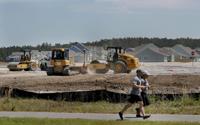
Land is cleared for new home construction in the Cane Bay neighborhood Friday, April 10, 2020, in Summerville. Three major developments are behind the rapid growth in Berkeley County. Grace Beahm Alford/Staff
Can growth pay for itself?
More South Carolina local governments have been adopting impact fees, where developers pay up-front amounts based on the impacts a home or business is expected to generate.
Impact fees can be dedicated to transportation, schools, public services, flooding, and recreation. Water and sewer utilities often have impact fees, as well, to help pay for extending service lines and adding capacity for new development.
In York County, there’s an $18,158-per-house impact fee that supports the Fort Mill School District. It’s the only district in the state with such a school impact fee, because it was first adopted in the 1990s before changes in law.
In Mount Pleasant, town impact fees on a single-family home add up to $6,132, with more than half the money dedicated to transportation and the rest for recreation, fire protection and municipal facilities. Businesses pay impact fees only for transportation, but the fees can be hefty — $121,449 for a six-bay, self-service car wash, for example.
Critics say that’s not fair, because a new car wash isn’t creating new traffic so much as it’s redirecting existing traffic. Berkeley County had a transportation impact fee for eight years, then ended it in 2014 for that reason.
Most local governments have no impact fees. Those that do have mostly been in the high-growth metropolitan areas that include Charleston, Hilton Head, Myrtle Beach, and Fort Mill.
Beaufort County, home to Hilton Head and Bluffton, has had a transportation impact fee for more than 20 years. When a new home or business is created, the county collects money to address transportation needs — and there are lots of new homes. Bluffton’s population has more than doubled since 2010.
Robert Merchant, the county’s acting director of planning and zoning, noted that impact fees can only be used for future, growth-related needs, and not to fix existing problems. He said Beaufort’s transportation impact fee, along with a 1-cent sales tax, helped fund the widening of S.C. Highway 278 and construction of the Bluffton Parkway.
“We have spent a lot of effort addressing the byproducts of growth,” he said.
State law doesn’t make it easy to impose impact fees. Doing so requires detailed studies, some impact fees have faced court challenges, and the fees must be updated every five years.
Guessing how much growth will come, and the financial impact, is one key challenge. When the Fort Mill School District first imposed an impact fee in 1996, it was $2,500 per dwelling, and studies estimated that just over three new schools would be needed by 2020.
Instead, by 2020, the school district had built 14 new schools and approved plans for three more. The impact fee has increased more than six-fold since 1996, and Fort Mill’s population has more than doubled since 2010.
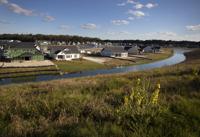
New homes are under construction in the Hampton Lake neighborhood off Bluffton Parkway, Monday, Nov. 23, 2020 in Bluffton. Grace Beahm Alford/Staff
Contracts with developers
An emerging trend in the quest to have growth pay for itself is a more aggressive approach to development agreements. Those agreements are long-term contracts between developers and local governments that lock rules in place, often for decades.
Such agreements have become common for huge developments that take many years to build — the kind that can have thousands of homes. Local governments can set rules, such as how many homes can be built yearly, but those agreements have allowed some developers to avoid impact fees and requirements that came along after their deal was signed.
Local governments, including the city of Charleston, have been demanding more in return when development agreements are reached. The enormous Long Savannah and Magnolia developments, for example, are contractually obligated to provide some affordable housing.
The Long Savannah development agreement also made it the developers’ responsibility to extend a major road, Glenn McConnell Parkway, and the city was promised land for city services and land for a new school. In return, the developers got rules and fees locked in place for decades, and the city acquired land for a large park on the edge of the property.
In Hardeeville, an explosively growing town near Bluffton that’s home to about 7,300, there’s one development agreement in place that calls for 9,500 new homes — a plan that will transform that area and potentially quadruple its population.
Mayor Harry Williams said that development agreement included about $110 million in developer-paid fees that will help fund schools, roads, and police and fire stations.
“They are all built into the home prices, obviously,” Williams said of the fees.
Long-term development plans can aid developers and local governments, if the contracts are a good deal for both. A bad deal simply locks in the developer's rights. The challenge in making a good deal is looking forward, for two or three decades.
For example, most of fast-growing Bluffton is covered by development agreements. The earlier ones did not include the town’s current requirement for making 20 percent of the housing affordable for people with middle incomes, according to Director of Growth Management Heather Colin.

Victoria Mills, a career and technology educator at Cane Bay Middle School, pushes a cart with her teaching supplies to her next classroom through a crowded hallway of students on Jan. 30, 2020. In the past seven years, the school has grown from around 400 students to 1,400. Lauren Petracca/Staff
Crowded schools, costly fixes
As South Carolina’s population has mushroomed, so has the need for more schools, particularly in areas where growth is more closely linked to jobs than retirement.
In regions where growth is most pronounced, some school campuses include rows of portable classrooms in the parking lots. Fast-growing student populations have put an immense strain on existing facilities, resulting in jam-packed cafeterias, overcrowded hallways, soaring class sizes, enrollment caps and competition for teachers.
School districts have no say in approving developments, state law limits the ability of districts to raise property taxes for school construction, and since 2007, owner-occupied homes pay no property tax at all to fund school operating costs such as teacher salaries.
So, with mixed results, school districts rely on local governments to control growth and to consider taxes or impact fees that benefit schools. In about a quarter of South Carolina counties, districts now receive money from extra voter-approved sales taxes that fund school construction projects.
Large residential developments can take years or even decades to build out, so districts often have a good idea of what’s coming, but acquiring land and building costly new schools from scratch also takes years.
Some districts have made land deals with developers, either buying land or being given land as part of a development agreement. That can ease the cost for districts, but one result is that new developments get conveniently located schools that existing residents of the area must travel to reach.
To save time and money, some districts have turned to prototype school designs instead of planning each one from scratch. For example, the school district in Berkeley County, one of the fastest-growing statewide, approved plans in October to spend $1.3 million on a prototype for a K-8 school.
Critics worry that a cookie-cutter approach will hamper schools' individual identities and fail to adequately address community-specific needs.
Public charter schools have filled some of the gaps, in some cases partnering with construction companies that will finance and build new facilities.
A 2016 state law added “public education facilities for grades K-12” to the list of items development impact fees can be used for, but there’s a catch. School districts can’t impose an impact fee, but instead need to convince a local government to impose one for the school district’s benefit.
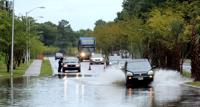
A Charleston police officer blocks a lane of traffic on Bees Ferry Road as motorists make their way through using the other lane. File/Staff
More roofs, more flooding
Sprawling development has been repeatedly linked to flooding. Rooftops and driveways cover land that once absorbed water, and some developments have used fill dirt to raise home sites, which can send stormwater into neighboring communities.
In the Charleston suburbs, fill dirt to raise home lots contributed to flooding around Church Creek by hemming in the narrow channel. One result was that more than $5 million in federal funding was used to buy and demolish dozens of homes, including a complex of repeatedly flooded townhomes along the creek.
In addition, development removes trees — a natural sponge for stormwater — and can fill in wetlands. In coastal areas, many communities now require new homes to be built higher, to make it less likely they will flood, but that only helps protect those newer buildings.
One solution is to build in places that are "high, dry and connected," Charleston Chief Resilience Officer Mark Wilbert said. The city's Dutch Dialogues report on flooding recommended reduced and less-impactful building in low-lying floodplains, which are common in the Lowcountry.
That study also suggested more regional cooperation, including a coastal group with members from Hilton Head to Myrtle Beach. The coalition would advocate to the state on coastal issues and flooding concerns.
Wilbert said local governments also need to work together to make sure one development isn't sending floodwaters over municipal lines.
On a consumer level, there's already been some progress. The S.C. Real Estate Commission recently required home sellers to disclose any Federal Emergency Management Agency claims they've filed.
Advocates say disclosure laws can be stronger, and one suggestion is to reveal the full flood insurance history for a prospective home. That, too, does not reduce flooding, but helps homebuyers know if a house has previously been damaged.
To reduce stormwater flooding caused by development, some local governments, including Pawleys Island and Mount Pleasant, have imposed stricter rules about impervious surfaces — the rooftops and driveways that cover water-absorbing soil.
Preserving green spaces
When land prices rise and forests and farms become potential subdivisions, efforts to protect green spaces become more challenging. Governments have several tools they can use, and the most common are zoning regulations and greenbelt programs that buy land or development rights.
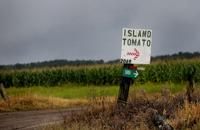
Rural labor camps are dotted throughout the Lowcountry, many on Johns Island, where guest workers are hired to harvest tomatoes and corn. Grace Beahm Alford/Staff
In Charleston, the city and county and, crucially, the water and sewer utility Charleston Water System have a long-standing "urban growth boundary" that's meant to mark the end of Charleston's suburbs. That's particularly important on Johns Island, a historically rural sea island.
Late this summer, Charleston City Councilman Karl Brady sought to strengthen the conceptual line by giving it the force of a city ordinance. That effort is still underway.
“There’s a consensus that it is important to hold the line,” Brady said. “Instead of it merely being a line on a planning document, it’ll be a line in a planning document that everyone has a hand in agreeing with.”
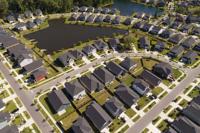
Homes in Maybank Village on Johns Island are pictured on Monday, April 27, 2020. Johns Islanders are confronting growth-related issues and increasing traffic congestion, but leaders say solutions are coming. Lauren Petracca/Staff
That urban growth boundary also plays a role in Charleston County’s Greenbelt Program, which was created in the 2000s to protect green space in the county. Since 2007, 21,000 acres have been preserved through the Greenbelt’s urban and rural grant program, according to Director Cathy Ruff.
The program buys land but also purchases development rights. The latter approach doesn't change the ownership of the property, but limits how it can be used — for hunting, timber or farming, for example, but not for building subdivisions.
It's been a popular enough initiative that voters in the county have twice agreed to pay higher sales taxes to fund it. The initial half-cent sales tax approved by voters put about $95 million into the urban and rural grant program, and in 2016 voters approved a second half-cent sale tax that's expected to raise $210 million for the program.
As with most growth-related solutions, the most effective time to lay out land-use regulations is before rapid growth has changed an area dramatically, and the best time to buy open spaces or development rights is before rapid growth has driven up the prices.
Regional cooperation is a key, with land-use rules. Charleston has its urban growth boundary line, but that hasn't stopped other local governments from approving developments beyond the line, outside the city limits.
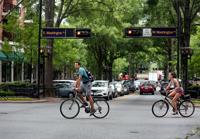
Pedestrians, bikes and car traffic cross Main and Washington streets in Greenville, Thursday May 24, 2018. Grace Beahm Alford/Staff
Another million coming
South Carolina's Revenue and Fiscal Affairs Office estimates that, over the next 15 years, the state's population will grow by 1,009,715 — a more than 19 percent increase from the current 5.2 million residents.
That's a lot of growth, and it will be mostly up to local governments to make sure that growth brings more benefits than problems.
As always, that growth won't be distributed evenly, and many rural counties will continue to have declining populations. Among those that will grow, some will see extreme growth continue.
Horry and Lancaster counties, the state projects, will see their populations rise by more than 50 percent in just 15 years. York and Berkeley counties can expect increases of more than 40 percent.
How local governments plan now for the growth to come will determine if that growth is sustainable or overwhelming.
Chloe Johnson, Mikaela Porter and Jenna Schiferl contributed to this report.
"try" - Google News
December 20, 2020 at 04:00AM
https://ift.tt/3nDSFpA
SC communities try creative solutions to challenges of rapid population growth - Charleston Post Courier
"try" - Google News
https://ift.tt/3b52l6K
Shoes Man Tutorial
Pos News Update
Meme Update
Korean Entertainment News
Japan News Update
Bagikan Berita Ini
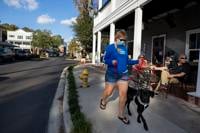
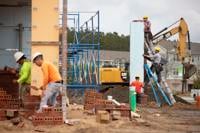
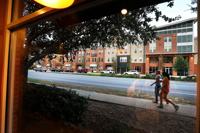
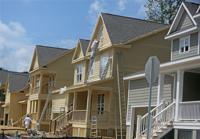


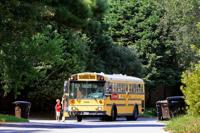


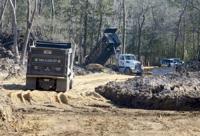

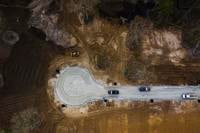














0 Response to "SC communities try creative solutions to challenges of rapid population growth - Charleston Post Courier"
Post a Comment